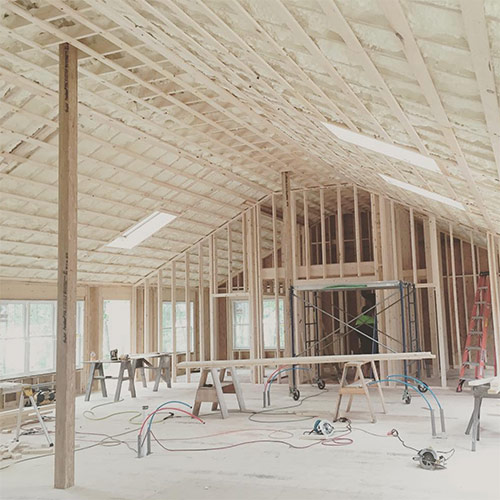In the picturesque landscapes of Maine, where the climate can swing from beautifully warm summers to breathtakingly cold winters, ensuring your mobile home is well-insulated is not just a luxury – it’s a necessity.
Proper insulation doesn’t only pave the way for a cozy living environment; it’s also about energy efficiency and cost savings. In this guide, we’ll dive deep into the best insulation practices for the roof, walls, and underbelly of your mobile home.
WHAT ARE INSULATION VALUES?
Before we explore the materials and methods, it’s crucial to understand R-values. An R-value measures an insulation material’s resistance to heat flow. The higher the R-value, the better the insulation performance.
In Maine’s cold climate, opting for insulation with a high R-value is essential for maintaining warmth and reducing heating costs.
INSULATION OPTIONS FOR MOBILE HOMES
When it comes to insulation materials, there’s no one-size-fits-all. Here are some common options:
- Fiberglass: Affordable and easy to install, suitable for DIY projects.
- Foam Board: Offers high R-values per inch, making it effective for space-limited areas.
- Spray Foam: Provides excellent air sealing and high R-values but requires professional installation.
4 Types of Insulation for Mobile Homes
1. Roof Insulation for Mobile Homes
The roof is a critical area to insulate, especially in snow-prone regions like Maine. Spray foam insulation is highly recommended for its superior R-value and ability to seal leaks and gaps.
Rigid foam board is another excellent option, providing solid thermal resistance with less thickness compared to other materials.
2. Wall Insulation for Mobile Homes
Walls play a significant role in a mobile home’s thermal envelope. Fiberglass batts are popular for their ease of installation and cost-effectiveness. Foam board insulation, while more expensive, offers better thermal resistance and can be a great choice for those looking to maximize energy efficiency.
3. Underbelly Insulation for Mobile Homes
Don’t overlook the underbelly of your mobile home. Insulating this area is key to preventing cold floors, frozen pipes, and moisture issues.
An enclosed underbelly with fiberglass insulation can protect against cold drafts, while spray foam insulation can seal off any gaps, offering an additional layer of protection against the elements.
4. Other Areas to Insulate for Mobile Homes
To achieve complete insulation, consider addressing windows and doors with weather stripping or replacing them with energy-efficient models. Incorporating a vapor barrier can prevent moisture damage – a common issue in Maine due to its humid climate.
DIY VS. PROFESSIONAL INSTALLATION
While some insulation projects can be tackled by a skilled DIYer, certain types, like spray foam, require professional installation. Hiring professionals ensures the job is done right the first time, saving you time and money in the long run. When choosing a contractor, look for someone with experience in mobile homes and a solid track record in your community.
Insulating your mobile home in Maine is an investment in comfort, energy efficiency, and cost savings. By focusing on the roof, walls, and underbelly, and choosing the right materials and installation methods, you can create a snug haven that stands up to Maine’s challenging weather conditions.
Remember, every mobile home and situation is unique. Don’t hesitate to reach out to a professional for personalized advice tailored to your specific needs.
If you’re ready to learn whether your mobile home is ready for insulation, get a free quote from Seal It Insulation Systems today!











